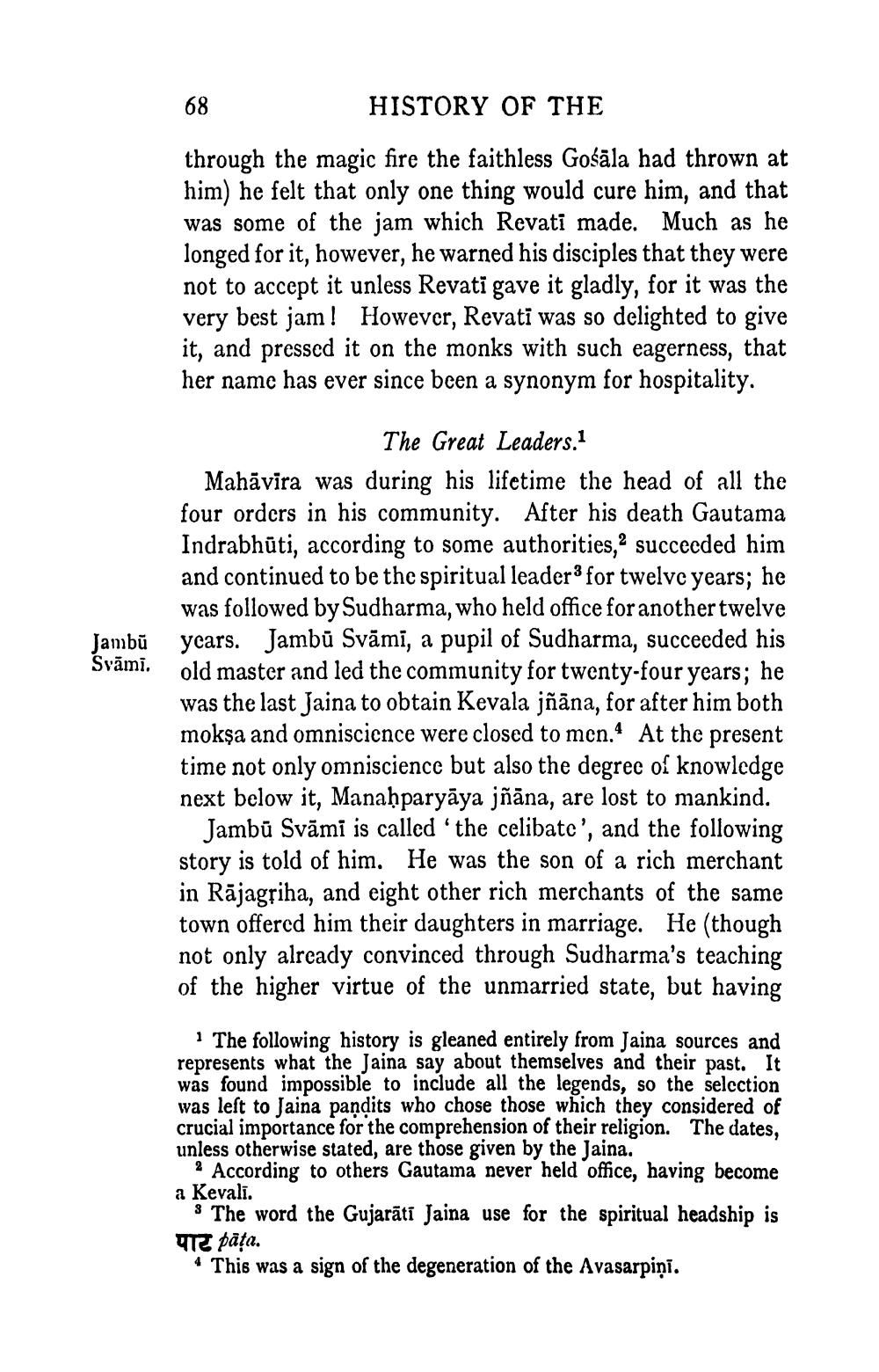________________
Jambū Svāmi.
68
HISTORY OF THE
through the magic fire the faithless Gośāla had thrown at him) he felt that only one thing would cure him, and that was some of the jam which Revati made. Much as he longed for it, however, he warned his disciples that they were not to accept it unless Revati gave it gladly, for it was the very best jam! However, Revati was so delighted to give it, and pressed it on the monks with such eagerness, that her name has ever since been a synonym for hospitality.
The Great Leaders.1
Mahavira was during his lifetime the head of all the four orders in his community. After his death Gautama Indrabhuti, according to some authorities,2 succeeded him and continued to be the spiritual leader for twelve years; he was followed by Sudharma, who held office for another twelve years. Jambu Svāmi, a pupil of Sudharma, succeeded his old master and led the community for twenty-four years; he was the last Jaina to obtain Kevala jñāna, for after him both mokşa and omniscience were closed to men. At the present time not only omniscience but also the degree of knowledge next below it, Manaḥparyāya jñāna, are lost to mankind.
Jambu Svāmi is called 'the celibate', and the following story is told of him. He was the son of a rich merchant in Rajagriha, and eight other rich merchants of the same town offered him their daughters in marriage. He (though not only already convinced through Sudharma's teaching of the higher virtue of the unmarried state, but having
1 The following history is gleaned entirely from Jaina sources and represents what the Jaina say about themselves and their past. It was found impossible to include all the legends, so the selection was left to Jaina pandits who chose those which they considered of crucial importance for the comprehension of their religion. The dates, unless otherwise stated, are those given by the Jaina.
2 According to others Gautama never held office, having become a Kevali.
The word the Gujarati Jaina use for the spiritual headship is पाट pāta.
4 This was a sign of the degeneration of the Avasarpiņi.




